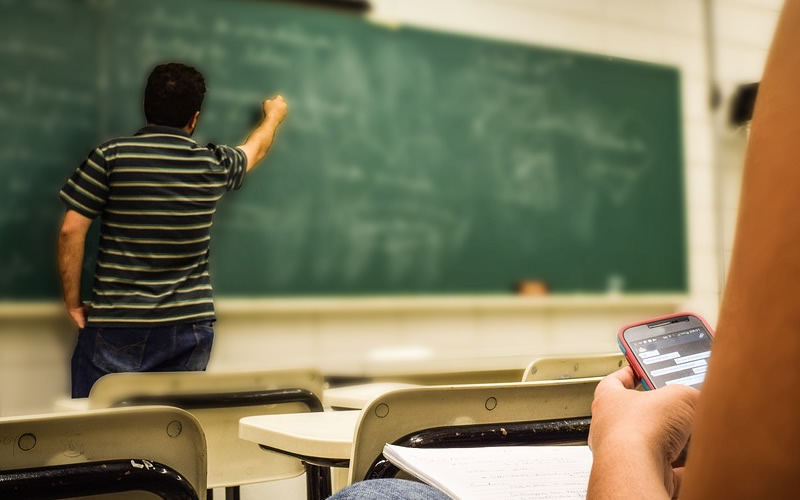
By Lindsay Street, Statehouse correspondent | The S.C. House’s proposed $9.3 billion budget — printed this week and set for debate March 11 — could provide the first step toward allowing local school districts to determine how they spend state dollars.
“You are seeing the beginnings of how the General Assembly is going to start debating school finance about rolling up more line items, giving more flexibility to school districts … and what is that local and state share going to be,” Education Oversight Committee Executive Director Melanie Barton said Friday.
At issue are 70-some budget lines that dictate how local school districts can spend state dollars. The proposed budget, which passed the House Ways and Means Committee last week, merged three of those big lines into one called “state aid to classrooms.” The move is being billed as a “roll-up” of siloed state money but dozens of siloes remain as education funding gets a hard eye this session.
‘State aid to classrooms’
The newly-minted line “state aid to classrooms” includes the traditionally-used base-student cost plus teacher salaries and fringe benefits. According to staff, lawmakers are seeking better transparency in state education money by eliminating and combining funding lines.
But some are calling it a sleight of hand — a redefinition to mask how the General Assembly has been underfunding base-student cost for years.

S.C. Rep. Gilda Cobb-Hunter, D-Orangeburg, told Statehouse Report last week that the House version is misleading because it appears the state is fully funding what’s required by state law by authorizing $3,846 to each student in the state when the only increase is going toward state-directed teacher pay raise.
The Education Finance Act (EFA) was enacted in 1977 to help poorer school districts keep up with wealthier districts in terms of resources. But, according to education watchdog Debbie Elmore, the state legislature hasn’t fully funded the formula since the 2007-2008 budget.
Elmore, who is S.C. School Boards Association director of governmental relations and communications, said that in the 2018-2019 budget, the base-student cost was set at $2,485, which was $474 per student shy of the formula’s required level. In the proposed budget, it would cost more than $500 million to full fund the per-student cost to state-mandated levels again, Elmore said.
Since 2010, state lawmakers have underfunded public education $4.7 billion, according to Statehouse Report analyses. In last year’s budget, South Carolina was about 12 percent below its pre-2008 education funding levels, according to a report from the Center on Budget and Policy Priorities
In the House’s proposed budget for 2019-2020, there is no increase to the base-student cost. Public education portions of the budget list overall recurring spending at $3.1 billion — by far the largest subcommittee request in the budget. State-aid to classrooms is tallied at $2.6 billion.
House Speaker Jay Lucas has called the EFA broken and has joined his Senate colleague and the governor in calling for an examination into the funding formula. The S.C. Revenue and Fiscal Affairs Office will review the formula and is tasked with producing a report by May 9, which is about the time that the General Assembly will end its regular session
More local control sought
Meanwhile as lawmakers mull a massive education overhaul bill and EFA reform, the House’s budget could be considered a first step in giving the reins back to local school districts, Barton said.
“This is the first steps toward changing the funding model,” she said.
School districts have advocated such a move for years.
“There are a lot of individual budget lines,” Elmore said. “The EFA was the primary mechanism for funding state education for years and years, and over time the state legislature says, ‘We need to have this thing’ and they create a separate budget line.”
And every separate line siloed state funds, mandating how local school districts could spend it, she said.
“For local school districts, that’s encumbered money, Elmore said, meaning that budget lines dictate how certain state funds can be spent.
Worries over combined line item
But all aren’t happy with the proposed budget, including Elmore.
For one, the state-aid to classrooms in the House proposed budget continues to silo money — $159 million — for specific use as teacher pay raises.
“It is not flexible money … it’s money to increase the starting teacher pay,” Elmore said.
For another, education advocates in the state say the House’s proposed budget will leave local school districts short in state funding since it does not include any increase to the state-mandated formula in how it distributes dollars on a per-pupil basis.
State Department of Education spokesman Ryan Brown said the failure to increase base-student cost actually decreases the state’s overall base-student cost by $18 per student in the 2019-2020 due to how the formula weighs demographics of students.
“The amount per pupil will not be $2,485. In the (proposed) budget, there is no reference to Base Student Cost, but the implied per pupil amount is $2,467 due to the increase in statewide weighted pupil units at the 45th day,” Brown wrote in a statement.
House debate could prove key
 Elmore said the looming House budget debate will provide a chance to get more funding toward per-pupil costs for school districts.
Elmore said the looming House budget debate will provide a chance to get more funding toward per-pupil costs for school districts.
“We’re going to try to get some kind of funding that is unencumbered to try to help districts to pay for … meeting the demands of educational requirements,” Elmore said. “We still have a ways to go in the House … We’re going to try to continue to educate lawmakers.”
If the House does not raise per-pupil spending, then education advocates will look to the Senate. In the 2018-2019 budget, the Senate was the chamber that increased school district student allocations.
“We have typically tried to increase the base-student cost mainly as a way to help school districts cover the step increases every year,” Summerville Republican Sen. Sean Bennett told Statehouse Report. Bennett is a member of the Senate Finance Committee and also served on the budget conference committee last year. “I would prefer to see the base-student cost increase closer to what it probably should be.”
However, he agreed that removing state budget silos will be key toward education reform.
“I’m a big believer that we spend plenty on education. We just don’t spend it in the right spot,” Bennett said. He added that the EFA formula awaits reformation, freeing up spending for local school districts by rolling up line items could prove positive for education in South Carolina.
- Next week: A budget briefing by House Ways and Means Chairman Murrell Smith and subcommittee chairs is slated for 90 minutes after adjournment March 6, and 9 a.m. March 7 in room 110 of the Blatt building.
- Have a comment? Send to: feedback@statehousereport.com















 We Can Do Better, South Carolina!
We Can Do Better, South Carolina!
Does this seem like a Pontious pilot move, A washing of the royal hands in the killing of public education.